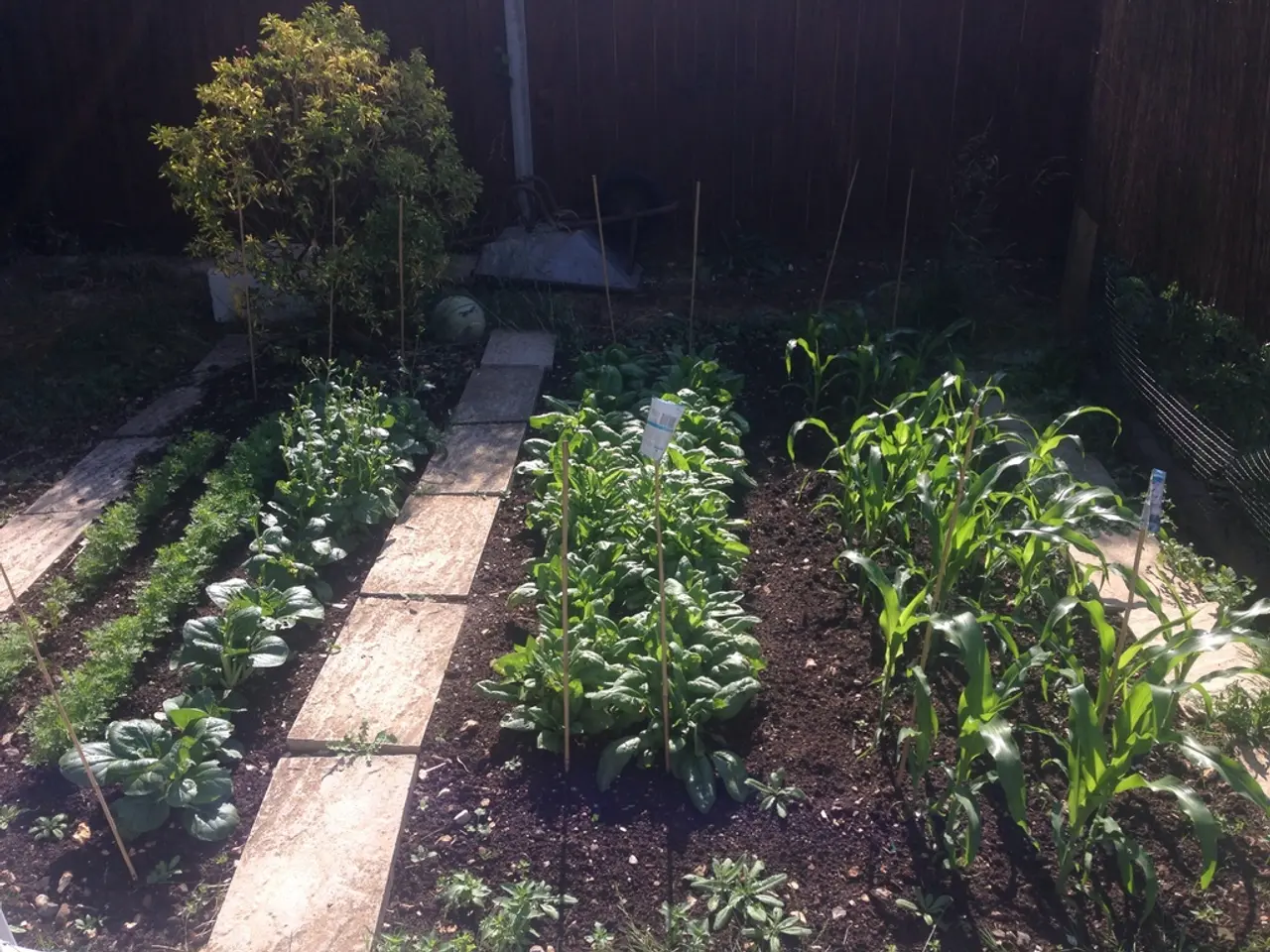Preparing Ground for American Ginseng Cultivation in Ohio: Implementing the Wild-Resembling Technique for Sowing
In the heart of the Appalachian region, a unique cultivation practice has emerged: the growth of wild-simulated American ginseng. This article provides an introduction to the steps involved in this process, drawing from various resources such as the Ohio Department of Natural Resources, Division of Wildlife, Tuckasegee Valley Ginseng Newsletter, and the Roots of Appalachia Growers Association (RAGA).
Site Selection
The first step in growing wild-simulated American ginseng is choosing a natural woodland site that mimics the plant’s native habitat. Ideal areas have well-drained, rich loamy soil under hardwood trees, providing 70-80% shade.
Seed Collection and Preparation
Mature ginseng seeds are collected in the fall when the berries turn dark red. These seeds should be stratified, or cold-treated, for 12-18 months to break dormancy before planting.
Seed Planting
Sow seeds in the fall, placing them ½ to 1 inch deep in forest soil, ideally near existing mature plants to simulate wild conditions.
Maintenance and Protection
To protect the planting area from deer and rodents, fencing or natural deterrents can be used. Avoid disturbing the soil too much to maintain natural forest conditions.
Growth Period
Because American ginseng is slow-growing, allow plants to grow undisturbed for at least 5 to 10 years until roots mature enough for harvest. Note that federal regulations enforce a 10-year minimum age for ginseng roots harvested for export.
Harvest Timing and Method
Harvest in fall when seeds mature. Dig mature plants carefully a few inches from the stem base to preserve root integrity. Re-plant some seeds near harvested plants to support natural population sustainability.
Harvest Regulations
Collect only mature plants with at least three five-pronged leaves and red berries, harvest during the legal season (September 1 to November 30), and obtain permission if on private land. Avoid harvesting on public/state lands.
Additional Tips and Resources
- Ginseng can be planted by hand one seed at a time in sites where raking and other site preparation is difficult.
- The optimal seeding rate for wild-simulated ginseng is four to five seeds per square foot.
- In Ohio, it is illegal to market a ginseng root under five years of age.
- Contact the Rural Action Forestry Program for information about how to obtain seed and planting stock of ginseng and other medicinal herbs.
- Site preparation for wild-simulated ginseng includes removing understory trees and shrubs, pruning lower branches, and removing large rocks or sticks.
- Planting over a number of years helps ensure a steady supply of mature roots and minimizes the risk of complete loss due to weather, rodents, or other environmental factors.
- Ginseng is regulated under Ohio Revised Code Chapter 1533.87 (Ohio Ginseng Management Program Laws).
- American ginseng plants can take about 3 years to produce seed in the wild.
- The cost of good quality, stratified ginseng seed is around $85 to $150 per pound.
- Ginseng seeds fall to the ground and lay dormant for 16-18 months before germinating.
- Ginseng seed must go through a period of cold dormancy (stratification) before it can germinate the following spring.
- Wild-simulated ginseng is grown to produce a root that is virtually wild in appearance to receive high prices in the Asian market.
In conclusion, growing wild-simulated ginseng is about replicating natural forest conditions, careful seed handling, long-term growth periods, and sustainable harvesting practices specific to the Appalachian environment. It's essential to conduct research on growing ginseng and the laws that govern ginseng harvesting and sales before planting a seed.
- The growth of wild-simulated American ginseng begins with choosing a natural woodland site that mirrors the plant's native habitat, featuring well-drained, rich loamy soil under hardwood trees providing 70-80% shade.
- To maintain the wild appearance of the ginseng roots to receive high prices in the Asian market, it's important to grow wild-simulated ginseng while adhering to sustainable harvesting practices, such as selecting the right site, handling seeds carefully, allowing for long growth periods, and understanding the regulations governing ginseng harvesting and sales.




